Harnessing divine visions, the seers of the Bible KJV unveil a unique spiritual guidance, beckoning a deeper exploration of their mystical legacy.
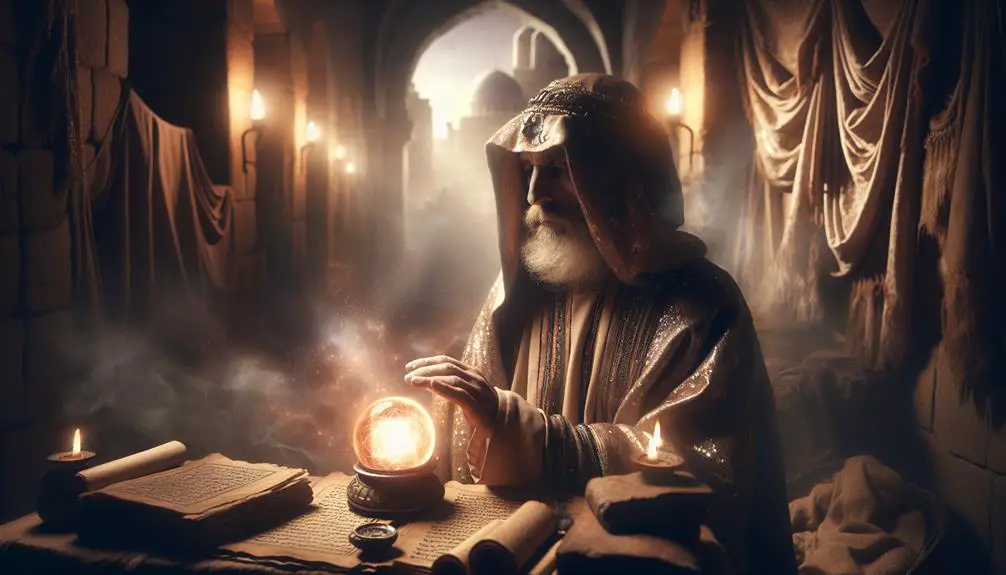
Seer in the Bible Kjv
In the King James Version (KJV) of the Bible, the term 'seer' holds a profound yet often underexplored significance, embodying a unique spiritual office that predates and, in some contexts, overlaps with the role of prophets.
Historically, seers were revered for their ability to receive divine visions and insights, offering guidance and foreknowledge that were instrumental in shaping the course of events, particularly in times of conflict and decision-making.
As we embark on an exploration of the historical context, the distinctiveness of seers from prophets, and their enduring influence on contemporary faith, one is compelled to ponder the depth and breadth of their impact on biblical narratives and beyond.
Key Takeaways
- Seers in the Bible KJV were revered for their ability to perceive divine messages and future events through visions.
- They served as intermediaries between the divine realm and the people, guiding spiritual and political decisions.
- Seers and prophets played complementary roles, with seers focusing on visions and prophets on direct verbal messages from God.
- The legacy of biblical seers continues to influence modern faith through practices of prayer, meditation, and fasting.
Understanding the Term 'Seer
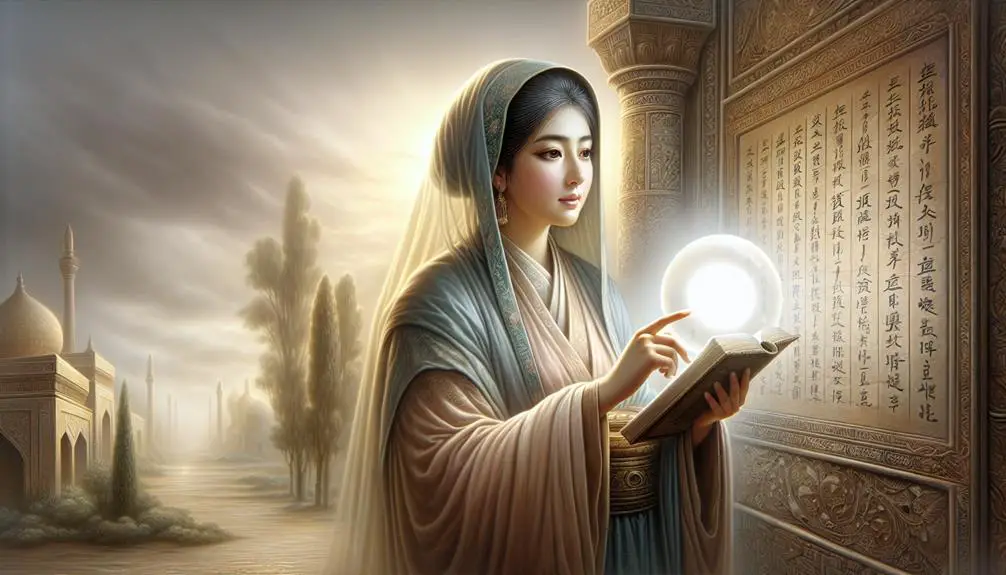
In biblical terms, a 'seer' is regarded as an individual endowed with the profound ability to perceive future events or divine will, often serving as a conduit between the spiritual realm and the people. The etymology of 'seer' traces back to the Old English word 'sear', which itself has roots in older Germanic and Indo-European languages, signifying one who sees or looks into the unknown. In the context of the Bible, particularly the King James Version (KJV), the term is used interchangeably with 'prophet', although subtle distinctions in their roles and methods of revelation can be discerned.
The concept of the seer has evolved significantly over the centuries. Historically, seers held a revered place in society, guiding decisions and offering insight through visions or interpretations of divine signs. Their perceived connection with the divine granted them a unique status, bridging the human with the supernatural.
In the modern context, the term 'seer' has broadened to encompass a variety of individuals who claim to possess extrasensory perception or psychic abilities, extending beyond the strictly religious connotations of ancient times. Modern seers often engage in practices such as clairvoyance, mediumship, and prophecy, presenting themselves as heirs to the ancient tradition of divination and spiritual intercession. This evolution reflects broader shifts in societal beliefs and attitudes towards spirituality, mysticism, and the metaphysical.
Despite the changes, the core essence of being a seer—as one who perceives beyond the immediate, tangible world—remains a constant, linking contemporary practitioners with their biblical predecessors.
Historical Context of Seers

The historical context of seers within the biblical narrative provides a critical lens for understanding their pivotal role in ancient Israelite society.
Through an examination of the evolution of prophetic visions, we can trace how seers transitioned from local advisors to central figures in guiding the spiritual and political directions of Israel.
This analysis sheds light on the multifaceted functions of seers, illustrating their significance in shaping Israel's history and religious identity.
Seers' Role in Israel
Seers held a pivotal role within ancient Israelite society, functioning as intermediaries between the divine realm and the people, offering guidance, prophecy, and counsel based on their perceived visions or messages from God. Their involvement in ceremonial rituals underscored their significance in maintaining societal religious practices and ensuring adherence to divine laws.
Through these rituals, seers not only connected with the divine but also facilitated a communal experience of the sacred, reinforcing social cohesion and shared religious identity. Moreover, their role in community guidance was indispensable. They interpreted divine will, advised on matters of national and personal importance, and mediated conflicts, thereby sustaining the moral and spiritual fabric of Israelite society.
Their insights influenced decisions at all levels, from the individual to the national, integrating spiritual discernment into daily life and governance.
Evolution of Prophetic Visions
Over time, prophetic visions underwent a significant transformation, reflecting shifts in theological perspectives and societal norms within ancient Israelite culture. This evolution is crucial for understanding the dynamics between vision interpretation and prophetic accuracy. As seers adapted to changing contexts, their prophetic messages evolved, indicating a deepening relationship between divine communication and human understanding.
Era |
Impact on Prophetic Visions |
|---|---|
Early Israelite Society |
Visions were direct, often linked to immediate societal concerns. |
Monarchical Period |
Increased emphasis on vision interpretation, reflecting complex political and social challenges. |
Post-Exilic Period |
Prophetic accuracy became paramount, shaping communal identity and future expectations. |
This table encapsulates the emotional and spiritual journey of a society seeking divine guidance through the changing lenses of their seers.
Prominent Seers in the Bible
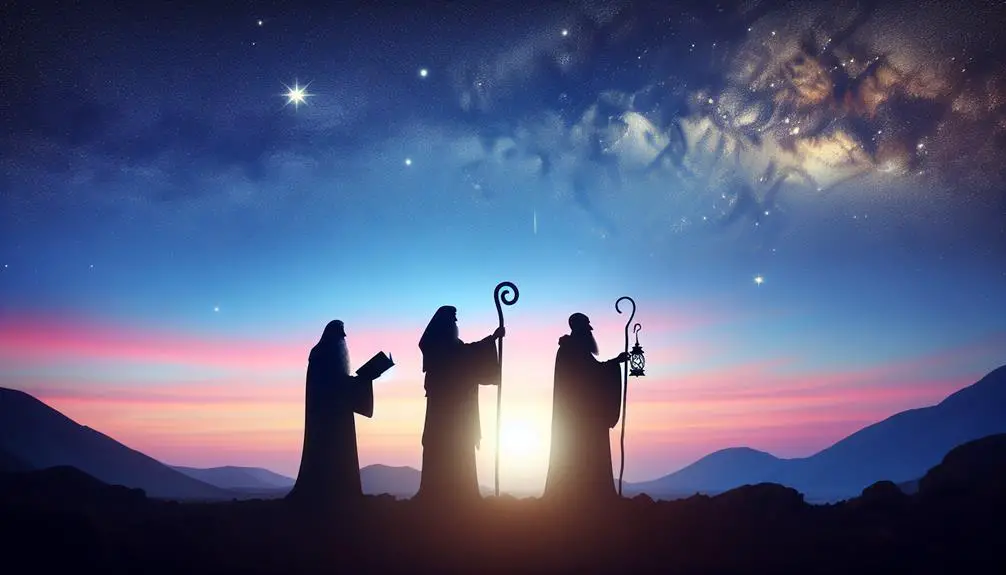
Within the scriptural narrative of the Bible, particularly the King James Version, certain individuals stand out for their roles as seers, offering divine guidance and prophecy to the leaders and people of their times. Samuel, recognized as the first seer, played a pivotal role in the transition from the period of the Judges to the establishment of the monarchy in Israel.
Gad and Nathan, serving as royal advisors to King David, exemplified the profound influence seers had on the governance and spiritual direction of the nation, highlighting the interwoven nature of religion and politics in biblical history.
Samuel: First Recognized Seer
How did Samuel emerge as the first recognized seer in the biblical narrative, setting a precedent for prophetic roles within the ancient Israelite society? Samuel's story, deeply interwoven with his lineage and the symbolic priestly garments, reflects a significant evolution in the perception of divine communication.
- Samuel's Lineage: Hailing from a Levitical family, Samuel's birth itself was miraculous, marking him for a special purpose.
- Priestly Garments: Adorned in priestly garments from a young age, Samuel's attire symbolized a bridge between the priestly duties and the prophetic calling.
- Divine Communication: Recognized for his unerring ability to relay God's messages, Samuel set the standards for the roles of seers in Israel.
Samuel's unique position as both priest and prophet established a foundational model for subsequent seers in biblical history.
Gad: David's Royal Advisor
Serving as King David's royal advisor, Gad emerges in the biblical narrative as a prominent seer, whose counsel and prophetic insights significantly influenced the monarch's reign and decisions.
While Gad's lineage is not elaborately detailed in the scriptures, his role as a seer places him in a pivotal position within David's court, providing divine guidance and wisdom in times of both prosperity and peril.
His contributions are essential in the context of David's decisions, acting as a spiritual compass and offering direction that shaped the course of the Israelite kingdom.
Gad's presence underscores the importance of prophetic voices in the governance and spiritual life of ancient Israel, reflecting a deep intertwining of faith and leadership in biblical times.
Nathan: Prophet to David
Nathan's tenure as a prophet to King David represents a critical juncture in the biblical narrative, highlighting the profound impact of divine counsel on royal decision-making and moral guidance in ancient Israel. His interactions with David reveal:
- The Confrontation Over Sin: Nathan boldly confronted King David about his sin with Bathsheba, leading to David's repentance, a pivotal moment that underscores the prophet's role in guiding the king towards moral rectitude.
- The Nathan Parable: Through a compelling parable, Nathan enlightened David about his wrongdoing, showcasing the prophet's wisdom in delivering divine messages.
- Bathsheba's Story: His involvement goes beyond confrontation, as he also plays a role in the narrative of Bathsheba, intertwining divine prophecy with human drama and redemption.
Nathan's contributions are invaluable, offering insights into the dynamics of prophetic influence and ethical leadership in biblical history.
Seers Vs. Prophets: Distinctions
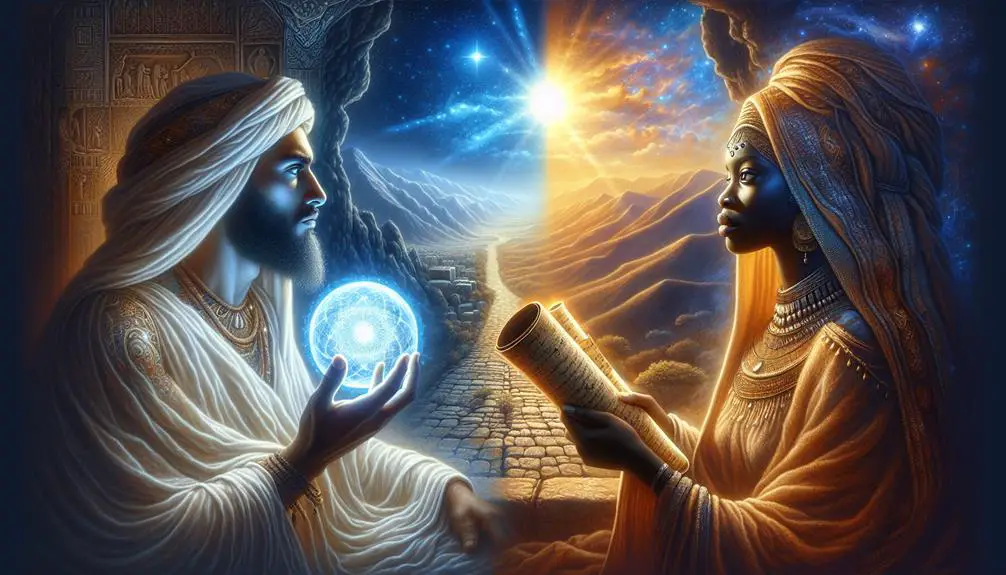
In the biblical context, seers and prophets often fulfilled divine roles, yet distinct differences in their functions and methods of revelation can be observed. The distinction between seers and prophets is nuanced, involving aspects of prophetic accuracy and cultural perceptions that influenced their roles within the biblical narrative.
Seers |
Prophets |
|---|---|
Primarily received divine messages through visions or dreams. |
Often heard the voice of God directly, conveying messages verbally. |
Focused on immediate, specific situations or guidance for individuals. |
Delivered messages with broader implications for nations or peoples. |
Were sought for their ability to "see" into situations, offering practical guidance based on divine insight. |
Emphasized moral and spiritual guidance, calling people to repentance. |
Seers, in many respects, were the spiritual consultants of their time, providing insights that were both immediate and specific. Their revelations were typically centered around practical guidance or resolving queries pertaining to the present or near future. This functional aspect contributed to their perceived prophetic accuracy, as their predictions or counsel could often be verified in a relatively short span of time.
Cultural perceptions also played a significant role in distinguishing seers from prophets. Seers were sometimes regarded with a mixture of awe and practical utility, serving as both divine messengers and counselors. Prophets, on the other hand, were often seen as bearers of longer-term, sometimes unwelcome truths, focusing on the moral and spiritual direction of their communities. This dichotomy illustrates the complex landscape of divine communication in the biblical era, highlighting the unique roles played by both seers and prophets.
The Role of Seers in Battles
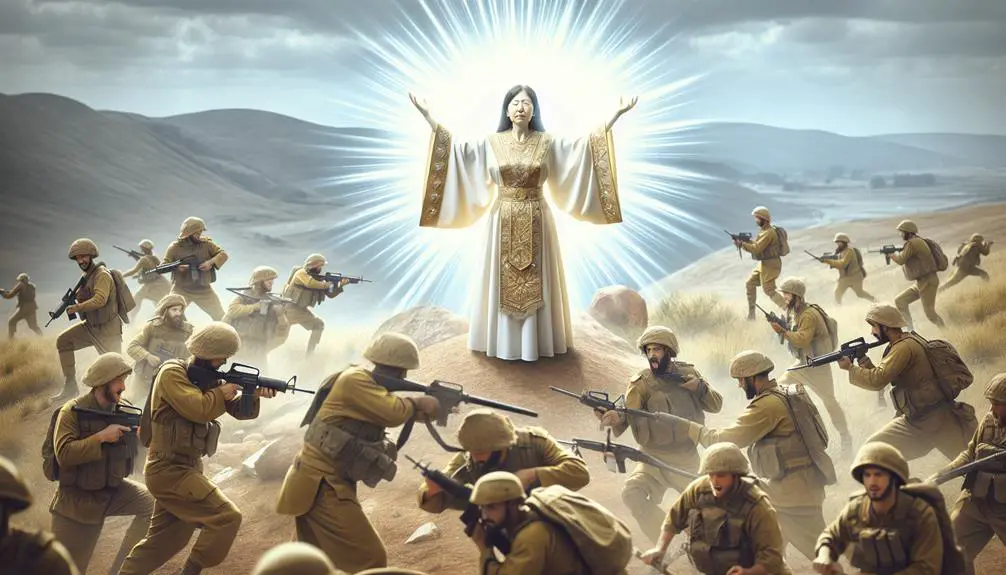
Throughout biblical history, seers played a pivotal role in military engagements, often guiding leaders and kings through divine foresight and strategic insight. Their involvement was not limited to mere predictions but extended to advising on tactics and strategies, significantly influencing battle outcomes. Seers, recognized by their distinct attire, which often symbolized their spiritual authority and connection to the divine, served as intermediaries between the divine realm and the earthly kings, providing counsel that was believed to be divinely inspired.
The role of seers in battles can be highlighted through the following points:
- Strategic Military Advice: Seers offered counsel on the timing and strategies of military campaigns. Their insights, considered to be guided by divine will, were critical in determining the most auspicious moments to engage in battle and the best strategies to employ, thereby significantly affecting the outcomes of these engagements.
- Divine Intervention Requests: In times of war, seers were also approached to intercede with the divine for protection or victory. Their prayers and rituals were seen as crucial in invoking divine favor, which was believed to sway battle outcomes in favor of those they supported.
- Moral and Spiritual Guidance: Beyond the tactical advice, seers provided moral and spiritual guidance to leaders and soldiers. This aspect of their role was essential in maintaining the morale of the troops and ensuring that the leaders' decisions were aligned with divine principles.
Their contributions went beyond the mere prediction of events, as they actively shaped the course of military history through their counsel and spiritual practices, leaving an indelible mark on the biblical narrative.
Messages and Visions Explained
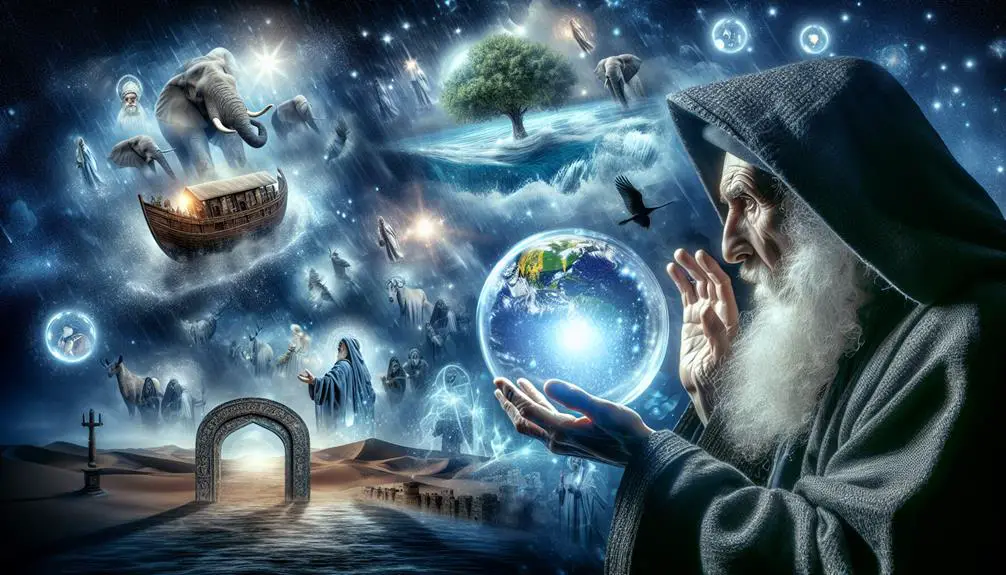
Seers in the biblical text were often bestowed with divine messages and visions, serving as a crucial conduit between the spiritual and earthly realms to guide, warn, or encourage the people of God in their journey. These figures, anointed with the ability to perceive beyond the natural senses, were instrumental in unfolding God's will, often through complex visionary symbolism that required divine interpretation. The intricate nature of these messages underscores the seers' pivotal role in bridging the gap between the divine intention and human understanding.
The decoding of such messages and visions was not a task taken lightly. It involved a deep spiritual discernment and an intimate relationship with the divine, as the visions often contained symbolic elements that transcended straightforward interpretation. This visionary symbolism, ranging from metaphorical imagery to allegorical scenarios, was imbued with profound spiritual insights that were pertinent to the immediate context of the people but also carried timeless truths.
The process of divine interpretation highlights the collaborative nature of the relationship between God and his messengers. It was not merely about receiving information; it was about understanding the heart and mind of God for His people. This necessitated a seer who was not only spiritually attuned but also capable of conveying these complex realities in a manner that was accessible to the broader community.
In essence, the messages and visions given to seers were a divine mechanism for communication, steeped in visionary symbolism and requiring a depth of divine interpretation. Through this spiritual dialogue, seers played an indispensable role in the spiritual direction and formation of the biblical communities, marking their contributions as both unique and essential to the unfolding story of God's people.
Seers' Influence on Modern Faith
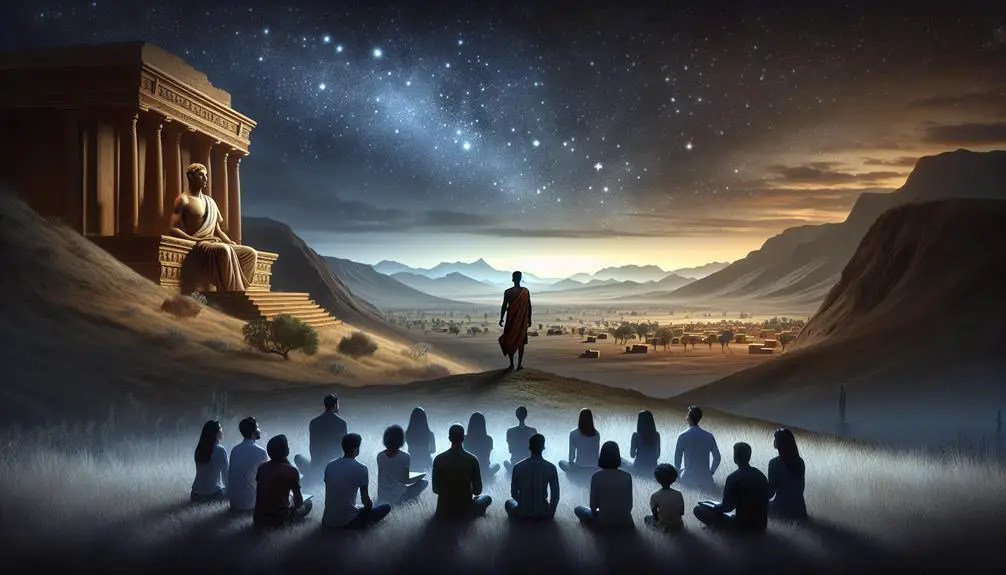
The enduring legacy of biblical seers has profoundly shaped the contours of modern faith, influencing contemporary spiritual practices and theological understanding. These ancient figures, known for their divinely inspired visions and messages, continue to offer a rich source of inspiration and guidance for many believers today. Their narratives, as recorded in the King James Version (KJV) of the Bible, serve as foundational texts from which modern interpretations and faith adaptations are derived.
The influence of biblical seers on modern faith can be observed through several key aspects:
- Theological Insights: Modern theological discussions often draw upon the wisdom and revelations of biblical seers. Their experiences and messages contribute to contemporary understandings of divine will, prophecy, and spiritual guidance. This has led to a deeper exploration of the nature of revelation and the role of prophetic voices in today's world.
- Spiritual Practices: The practices of prayer, meditation, and fasting, often associated with the biblical seers, have been adapted into the daily spiritual routines of many modern believers. These practices are viewed as means to attain spiritual clarity, divine visions, and a closer relationship with the divine, mirroring the pursuits of the seers.
- Community and Guidance: The stories of biblical seers serve as a source of guidance and inspiration for faith communities. The seers' unwavering faith and their role as intermediaries between the divine and the people model how individuals and communities can navigate spiritual and moral dilemmas.
In essence, the narratives of biblical seers continue to resonate within the fabric of modern faith, inspiring adaptations in spiritual practice, theological understanding, and community guidance. Their legacy underscores the timeless relevance of their divine encounters and the enduring impact of their messages on contemporary spiritual life.
Frequently Asked Questions
How Did the Role and Perception of Seers Evolve Post-Biblical Times Into the Early Christian Church and Beyond?
In post-biblical times, the role and perception of seers underwent significant evolution, impacting early Christian thought and practices. The legitimacy of seers became a nuanced topic, influenced by cultural contexts and theological debates.
This evolution was marked by a discernible shift, where the cultural impact of seers was reevaluated within the burgeoning Christian tradition, leading to a complex interplay between historical reverence and the evolving doctrinal stance on prophetic figures.
Are There Any Documented Instances Where Seers' Predictions in the Bible Directly Contradicted the Outcomes, and How Were These Instances Explained or Rationalized by Scholars or Theologians?
The inquiry into historical accuracy and cultural interpretations of seers' predictions, particularly those that seemingly contradicted eventual outcomes, delves into a complex scholarly discourse. Analysts and theologians have often approached these instances through a lens of contextual and cultural understanding, suggesting that apparent discrepancies may reflect the evolving nature of religious interpretation rather than outright inaccuracies.
This analytical approach provides a nuanced view of ancient prophetic roles within their historical and cultural framework.
In Contemporary Religious Practices, Are There Equivalents to Seers Within Modern Christian Denominations, and How Are Their Roles and Messages Perceived?
In the vast ocean of contemporary religious practices, equivalents to biblical seers emerge as charismatic figures who claim to receive modern prophecies. These individuals often serve within Christian denominations, offering spiritual consultation and guidance. Their roles and messages, deeply rooted in a tradition of divine communication, are carefully scrutinized and variously embraced by communities.
Analytically, their presence underscores a continuing quest for spiritual insight, reflecting a profound human desire to connect with the divine realm.
How Have Seers From the Bible Influenced Non-Christian Religions or Belief Systems, if at All, in Terms of Prophetic Traditions or the Concept of Divine Visionaries?
The influence of biblical seers on non-Christian religions illustrates cultural diffusion and highlights mythological parallels in prophetic traditions.
Analyzing these connections reveals how the concept of divine visionaries transcends religious boundaries, enriching our understanding of spiritual leadership across cultures.
This cross-cultural exchange has shaped perceptions of prophecy, demonstrating how shared narratives of divine insight foster a broader comprehension of human spirituality and its expressions through various belief systems.
What Psychological or Sociological Explanations Have Been Proposed to Explain the Experiences and Abilities Attributed to Seers in the Bible, Especially in Light of Modern Understandings of Consciousness and Perception?
In addressing the phenomena traditionally ascribed to biblical seers, modern scholarship often employs a blend of humor and analysis. This approach subtly questions the divine by linking these experiences to neurological disorders or sophisticated dream analysis.
This approach situates the seers' visions within the framework of contemporary understandings of consciousness and perception. It suggests that what was once considered prophetic might be better understood through the lens of psychological and sociological theories.
Conclusion
In conclusion, the examination of seers within the biblical context demonstrates their pivotal role in the spiritual and societal fabric of ancient times. These individuals, distinct yet overlapping with prophets, contributed significantly to the guidance of leaders and the masses through their divine insights.
Their roles in battles and the conveyance of messages underscore the profound impact they had on shaping decisions and beliefs.
The legacy of seers continues to influence contemporary faith, embodying a bridge between the mortal and the divine, guiding adherents in their spiritual journey.

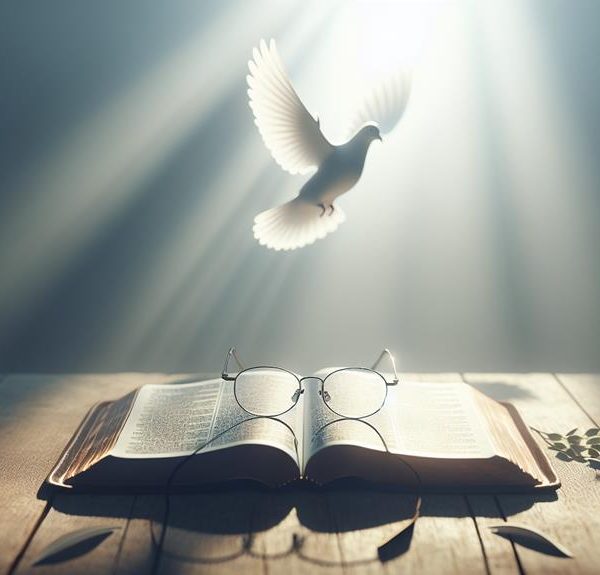

Sign up